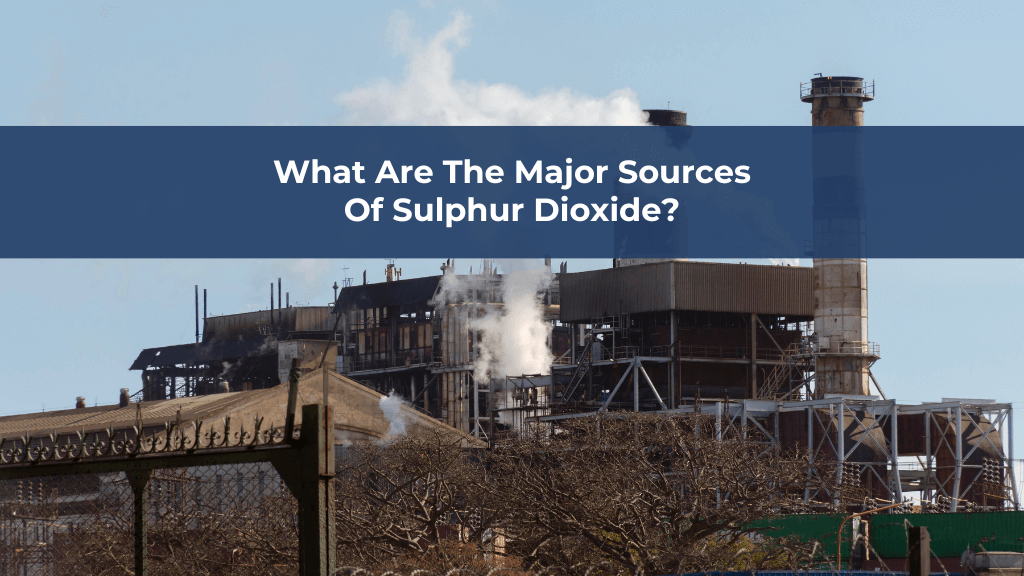Sulphur dioxide, a highly reactive gas, gets released into the air from both natural processes and human activities. We are well aware of sulphur dioxide’s detrimental impact on the environment and our well-being. This article aims to shed light on the primary sources of sulphur dioxide and the detrimental consequences it brings when released into the atmosphere.
Understanding Sulphur Dioxide
Sulphur dioxide is a colorless gas with a pungent odor. It is produced when sulphur-containing fuels, such as coal and oil, undergo combustion. The chemical formula for sulphur dioxide is SO2, and it has a molecular weight of 64.06 g/mol. It is a common air pollutant and a precursor to acid rain formation.
Natural Sources of Sulphur Dioxide
While anthropogenic activities contribute significantly to sulphur dioxide emissions, there are also natural sources of this gas. Volcanic activity is one of the major natural sources of sulphur dioxide. When volcanoes erupt, significant amounts of sulphur dioxide are released into the atmosphere. This gas is emitted during the process of volcanic degassing and can have both immediate and lasting impacts on the environment.
Anthropogenic Sources of Sulphur Dioxide
Industrial Emissions:
Many industrial processes release sulphur dioxide into the atmosphere. Industries such as power plants, metal smelters, and chemical manufacturing facilities emit significant amounts of this gas.
The burning of fossil fuels, especially coal, and oil, in various industries, significantly contributes to the release of sulphur dioxide into the air.
Fossil Fuel Combustion:
The burning of fossil fuels for electricity generation, heating, and transportation is a primary source of sulphur dioxide emissions.
Power plants that rely on coal or oil as fuel release substantial amounts of sulphur dioxide into the air when these fuels are burned.
Transportation:
Vehicles that use diesel fuel, which contains sulphur, emit sulphur dioxide during combustion.
Ships, trains, and heavy-duty vehicles are significant contributors to sulphur dioxide emissions in the transportation sector.
Residential Sources:
Residential sources, such as heating systems and cooking appliances that use fossil fuels, can release sulphur dioxide into the air when these fuels are burned.
Improperly maintained or outdated heating systems can lead to higher emissions of sulphur dioxide.
Volcanic Activity
Volcanoes release large amounts of sulphur dioxide during eruptions. The released gas can travel long distances and persist in the atmosphere, leading to regional and even global impacts. Volcanic sulphur dioxide emissions contribute to the formation of aerosols, which can affect climate patterns and cause short-term cooling effects.
Impacts of Sulphur Dioxide
Environmental Effects
Sulphur dioxide has various environmental impacts, including:
Acid Rain Formation:
Sulphur dioxide reacts with other compounds in the atmosphere to form sulphuric acid. When this acid precipitates, it contributes to acid rain, which can have detrimental effects on aquatic ecosystems, forests, and infrastructure.
Particulate Matter Formation:
Sulphur dioxide can react with other pollutants to form particulate matter, which can contribute to reduced air quality and respiratory issues.
Human Health Effects
Exposure to sulphur dioxide can lead to several health effects:
Respiratory Issues:
Inhaling sulphur dioxide can irritate the respiratory system, triggering symptoms like coughing, wheezing, and breathlessness. People with pre-existing respiratory conditions, like asthma, are especially susceptible to its effects.
Cardiovascular Effects:
Studies have shown associations between sulphur dioxide exposure and cardiovascular diseases, including heart attacks and strokes.
Regulatory Measures
To mitigate the impacts of sulphur dioxide emissions, regulatory measures have been implemented worldwide:
Emission Standards:
To comply with environmental regulations, governments have established limits on sulphur dioxide emissions from various sources, including power plants and vehicles.
These standards encourage the use of cleaner technologies and the adoption of emission control measures.
Fuel Regulations:
The sulphur content in fuels, particularly diesel, and gasoline, is regulated to reduce sulphur dioxide emissions from vehicles and other combustion sources.
Reducing Sulphur Dioxide Emissions
To reduce sulphur dioxide emissions further, several strategies can be implemented:
Transition to Cleaner Energy Sources:
Shifting from fossil fuels to cleaner energy sources, such as renewable energy, can significantly reduce sulphur dioxide emissions.
Increased use of natural gas, which emits lower levels of sulphur dioxide compared to coal and oil, can also help reduce emissions.
Improved Industrial Practices:
Adoption of advanced technologies, such as scrubbers and sulphur recovery units, in industrial processes can minimize sulphur dioxide emissions.
Implementing stricter emission control measures and optimizing production processes can also contribute to emission reductions.
Conclusion
Sulphur dioxide emissions arise from both natural and human activities, with anthropogenic sources playing a significant role. The release of sulphur dioxide has adverse effects on the environment, including acid rain formation and decreased air quality. It also poses risks to human health, particularly respiratory and cardiovascular health. To address these challenges, regulatory measures, and emission reduction strategies are being implemented globally. Transitioning to cleaner energy sources and improving industrial practices are crucial steps toward reducing sulphur dioxide emissions and mitigating their impacts.
FAQs
1. Can sulphur dioxide emissions be eliminated?
A. While it may be challenging to eliminate sulphur dioxide emissions, significant progress can be made by adopting cleaner energy sources, implementing stricter regulations, and improving emission control technologies.
2. How can individuals contribute to reducing sulphur dioxide emissions?
A. Individuals can contribute by adopting energy-efficient practices, using cleaner transportation options, and supporting policies that promote emission reduction.














